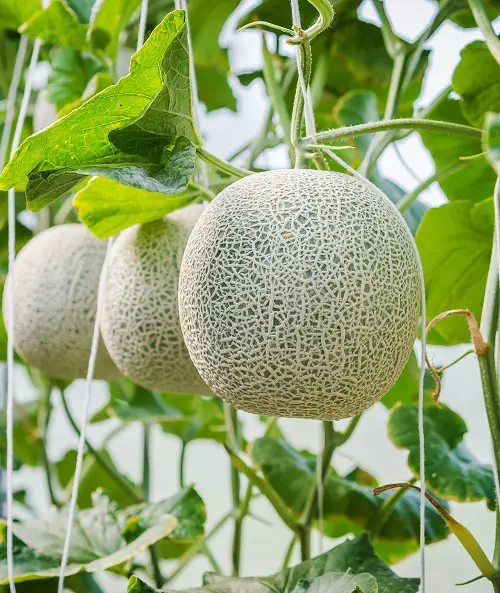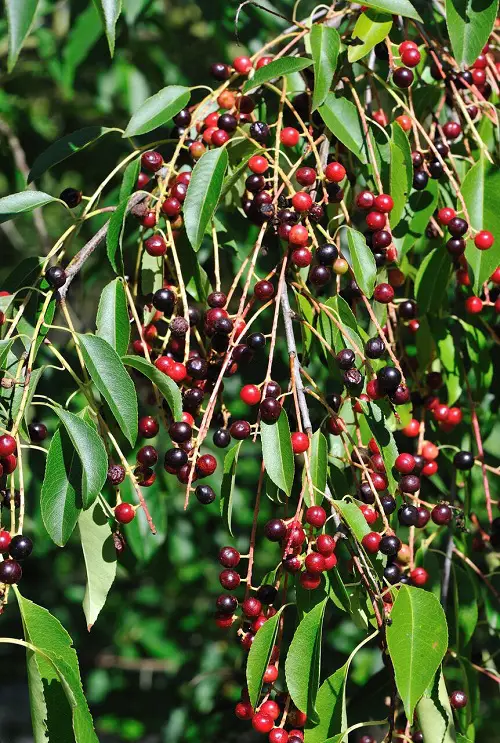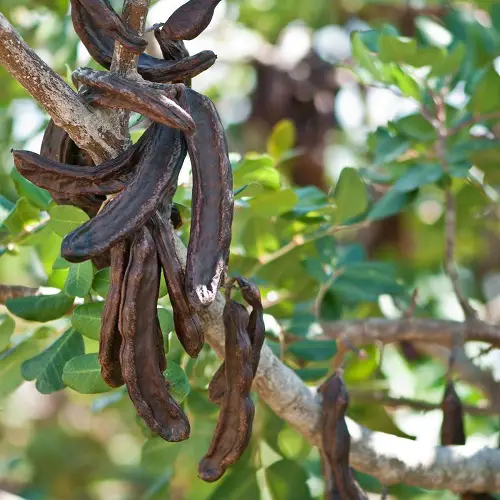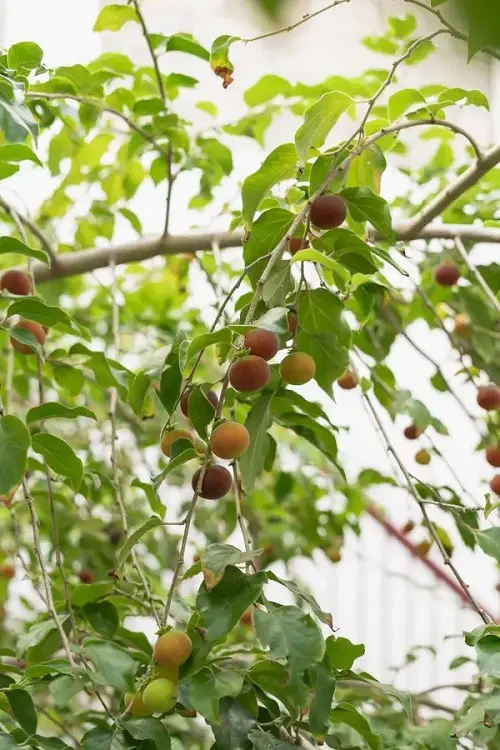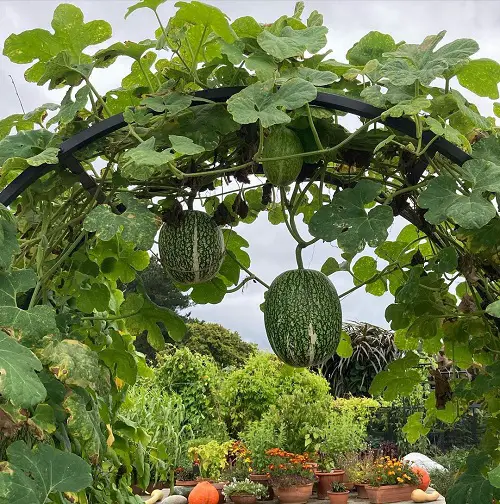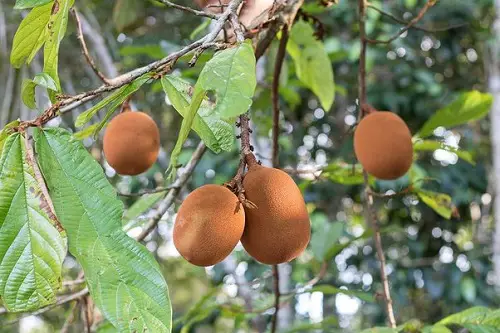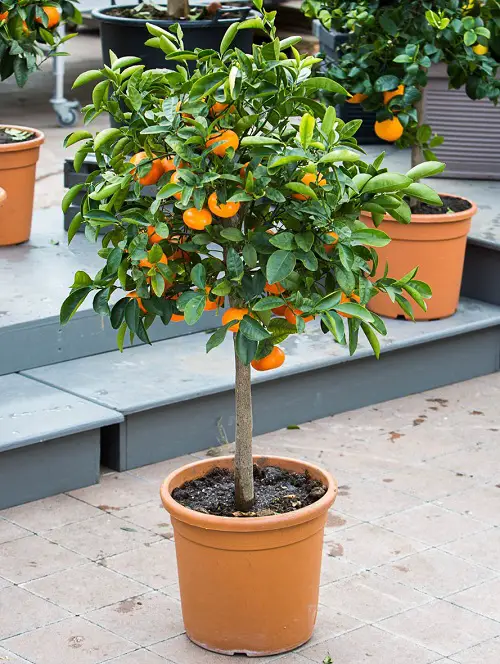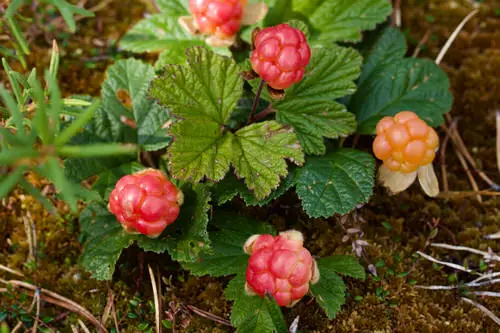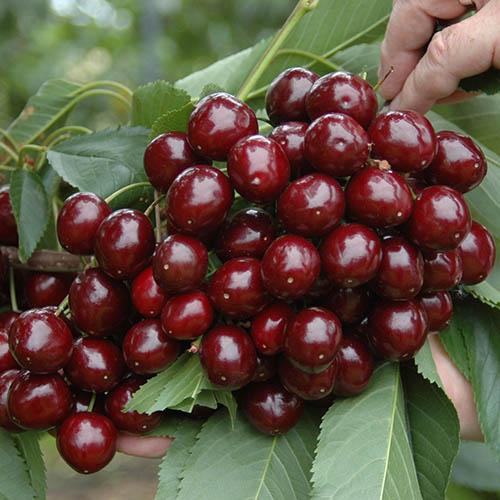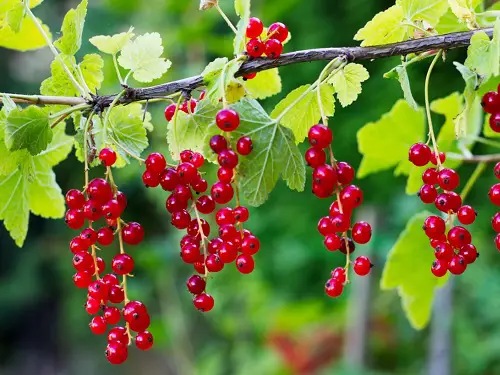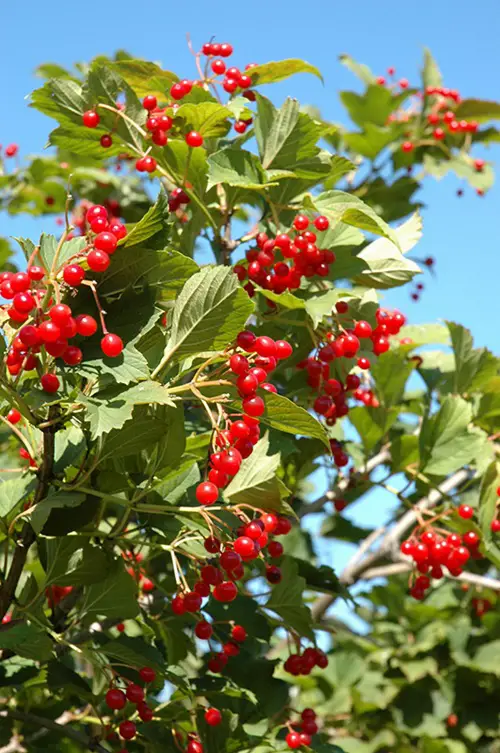You’ve got to add these Names of Fruits That Start With C to your list because they have great taste and many health benefits!
Be honest, how many of these Names of Fruits That Start With C did you already know? Time to put your knowledge to the test!
Fruits That Start With C
1. Cactus Fruit
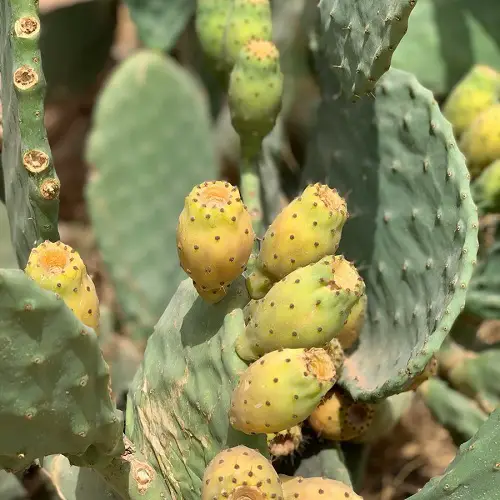
Botanical Name: Opuntia
USDA Zones: 4-9
Cactus fruits are actually pretty common and come in all sorts of colors. The most popular one is the prickly pear, which has a sweet taste and is packed with antioxidants and vitamins. You can eat it raw, blend it into smoothies, or even turn it into jams!
2. Calamondins Fruit

Botanical Name: Citrofortunella microcarpa
USDA Zones: 9-11
Calamondins are tiny citrus fruits that are like a mix between a lime and an orange. They’re super sour on their own, but the rind is edible and flavorful. People love them in marmalades, sauces, and even cocktails for a tangy kick!
3. Caimito

Botanical Name: Chrysophyllum cainito
USDA Zones: 10-11
Also known as star apple, Caimito is a tropical fruit with jelly-like flesh and a sweet taste. This fruit that starts with C gets its nickname from the star-shaped pattern left behind when you cut it in half. The pattern is caused by the way the seeds are arranged inside. They are a good source of vitamins C and B6, too.
4. Camu Camu Berry
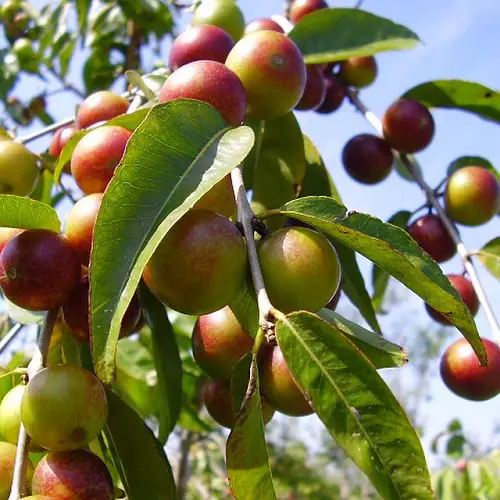
Botanical Name: Myrciaria dubia
USDA Zones: 9-11
The Camu Camu berry is a tart, cherry-like fruit native to the Amazon rainforest. It grows on small evergreen shrubs that thrive in swampy areas along rivers. Camu Camu boasts one of the highest natural concentrations of vitamin C, even exceeding citrus fruits!
5. Canary Melon
Botanical Name: Cucumis melo L. (Inodorus Group) ‘Canary’
USDA Zones: 10-11
Canary melons, or Spanish melons, are round to slightly oval with smooth yellow skin and juicy white flesh. It’s actually a type of muskmelon belonging to the Cucurbitaceae family, the same family as watermelons, pumpkins, and cucumbers. When selecting a Canary melon, look for one that has a slightly waxy feel to the rind.
6. Candlenut

Botanical Name: Aleurites moluccanus
USDA Zones: 10-12
The Candlenut has a hard shell and is not usually eaten raw due to its bitter taste. However, the kernels inside are nutty. You should know that candlenut flesh is only safe for consumption after thorough cooking. Raw or undercooked candlenut flesh has toxins that can harm you.
7. Canistel
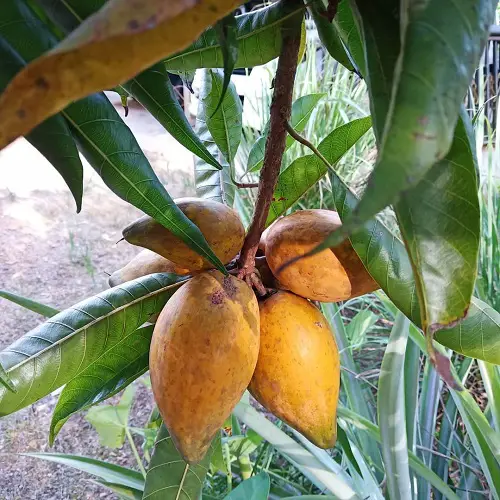
Botanical Name: Pouteria campechiana
USDA Zones: 10-11
Native to Central America and the Caribbean, Canistel or Eggfruit is a good source of vitamins A and C. It’s a tropical fruit that’s grown in many parts of the world today, including Florida and Hawaii in the United States. You can enjoy it raw or combined with smoothies and desserts.
8. Cantaloupe
Botanical Name: Cucumis melo var. cantalupensis
USDA Zones: 4-10
Cantaloupe is actually a fruit! It’s also a melon in the Cucurbitaceae family. People love it because it has juicy orange flesh with a sweet flavor that’s perfect for a summer snack. It is also a good source of vitamins A and C, as well as potassium and fiber.
9. Caper
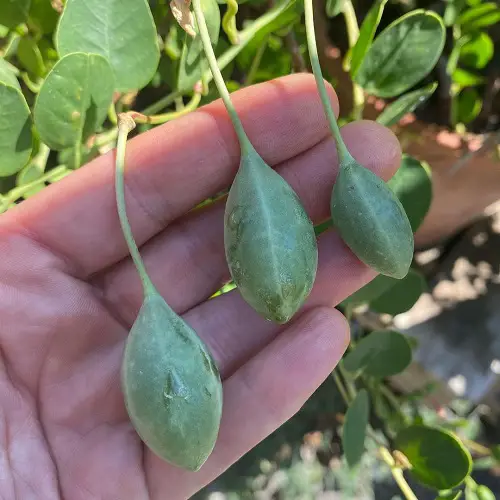
Botanical Name: Capparis spinosa
USDA Zones: 8-11
Here’s another fruit that starts with a C. Caper Bush. It’s not known for the fruit but actually the flowers. But it does give you Caper Berries. Caper Berries are the unopened fruit of the caper plant and are typically harvested when they are still green and immature. They are then pickled in vinegar or brine, similar to capers, or sometimes salted.
10. Cape Gooseberry
Botanical Name: Physalis peruviana
USDA Zones: 8-11
Cape Gooseberry, also called Ground Cherry, has a sweet-tart flavor with a blend of pineapple and mango notes. The fruit is about the size of a cherry or a marble, with a round, golden-yellow interior. Cape Gooseberries are a good source of vitamins A and C and also contain antioxidants and fiber.
11. Capulin Cherry
Botanical Name: Prunus salicifolia
USDA Zones: 3-10
Capulin Cherry, also known as Wild Black Cherry, is a fruit tree from Mexico and Central America. Its edible fruit has a sweet, slightly tart flavor profile. It’s not closely related to cherries you might find in grocery stores but is more like stone fruits–apricots, peaches, and plums.
12. Carambola
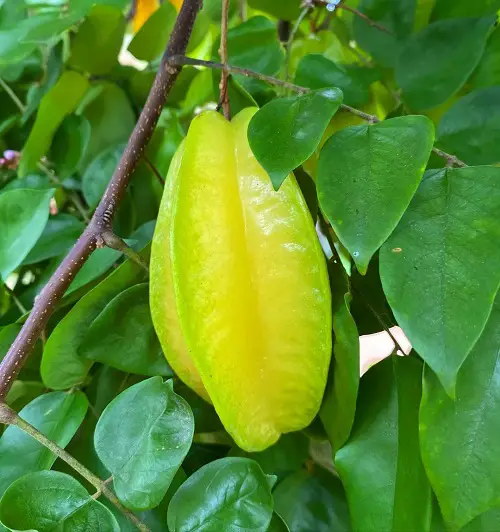
Botanical Name: Averrhoa carambola
USDA Zones: 9-11
Carambola is a tropical fruit that looks like a star when sliced. You can find it in two main varieties–a smaller, sour variety and a larger, sweeter one. Sweet Carambolas have a juicy, slightly tart flesh. Want to grow your own? Here’s our quick guide.
13. Carob
Botanical Name: Ceratonia siliqua
USDA Zones: 9-11
Carob is an edible fruit with a chocolatey flavor that comes from Carob trees. These are edible pods which look like long, brown beans. If you’re looking for a naturally sweet and healthy ingredient for baking, carob can be a great choice.
14. Cattley Guava
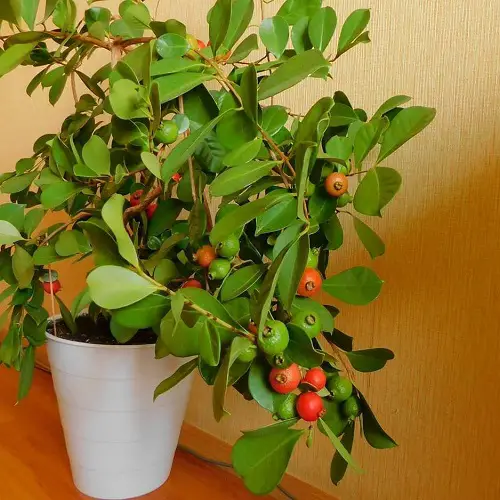
Botanical Name: Psidium cattleianum
USDA Zones: 9-11
Cattley Guava is also known as Strawberry Guava. You can easily grow the tree and relish your own fruits. It matures just in 3-4 years. It’s also a great choice for home gardens in tropical and subtropical climates.
15. Cedar Bay Cherry
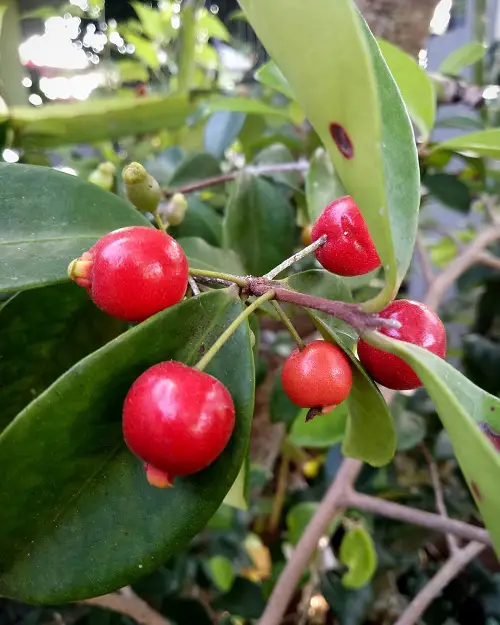
Botanical Name: Eugenia reinwardtiana
USDA Zones: 10-11
The Cedar Bay cherry sounds like a real tropical treat! It’s not quite a true cherry, but who cares when it tastes like berries and grapes all rolled into one? Plus, the bright orange fruits look amazing on the tree. They’re definitely fruits that start with the letter C that you ought to try.
16. Cempedak Fruit
Botanical Name: Artocarpus integer
USDA Zones: 10-11
The Cempedak fruit is like a giant, spiky cousin of the jackfruit. It is smaller than jackfruit, though, and some folks say it’s even tastier. If you’re ever in Southeast Asia, keep an eye out for this one! You might just discover your new favorite snack.
17. Ceylon Gooseberry
Botanical Name: Dovyalis hebecarpa
USDA Zones: 9-11
Ceylon Gooseberry is a dark purple, juicy globose berry with an acidic flavor. The skin is not very pleasant to eat due to tiny hairs and a bitter taste. But the flesh inside is a lush, purplish red, just like a blueberry.
18. Charichuela
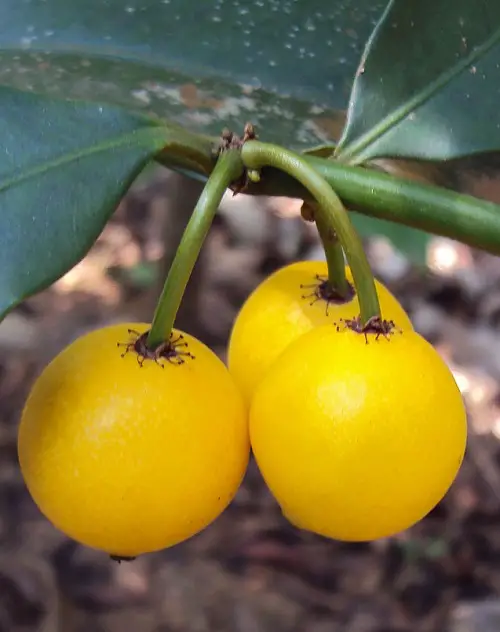
Botanical Name: Rheedia madruno
USDA Zones: 10-12
Charichuela is common in Central and South American rainforests. The fruit looks a bit like a shriveled lemon with a similar rind, and for that reason, it’s sometimes called a lemon drop mangosteen. Plus, the tree isn’t too fussy about where it grows.
19. Chayote
Botanical Name: Sechium edule
USDA Zones: 8-11
Chayote is a funny-looking fruit that might remind you of a bumpy avocado. Don’t let the looks fool you, though; it’s actually a super versatile veggie! You can eat it raw like a crunchy cucumber or cook it up for a mild, refreshing flavor.
20. Cherimoya
Botanical Name: Annona cherimola
USDA Zones: 10-11
Have you ever seen a fruit that looks like a spiky green artichoke? That’s the Cherimoya! But crack it open, and you’ll find a creamy, soft center that tastes like a mix of banana, pineapple, and maybe even a hint of citrus.
21. Custard Apple
Botanical Name: Annona reticulata
USDA Zones: 7-12
Custard apple might sound a bit strange, but trust us; it’s delicious! The flesh is soft and sweet, like a custard you can eat with a spoon, and the flavor is a lovely mix of tropical fruits and citrus.
22. Chilacayote
Botanical Name: Cucurbita ficifolia
USDA Zones: 9-11
The Chilacayote fruit itself is a large, oblong fruit that can grow up to 20 centimeters in diameter and weigh up to 6 kilograms! Young chilacayote has a mild, slightly sweet flavor, but as they mature, Chilacayote develops a starchy, potato-like flavor.
23. Chinese Bayberry
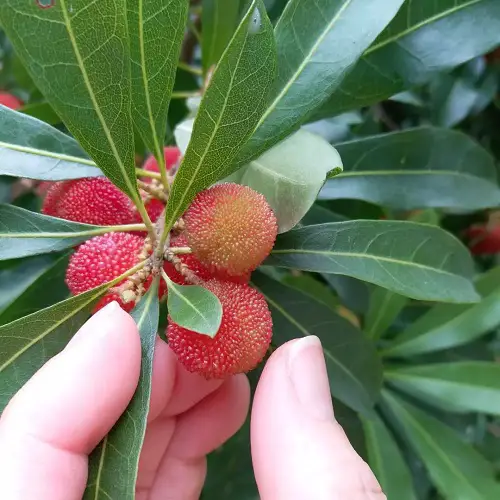
Botanical Name: Myrica rubra
USDA Zones: 9-11
Chinese Bayberry, also known as Yangmei or Chinese Mulberry, is a small red or pink fruit with a slightly rough skin. The taste is where things get interesting. Vendors often sell them at different ripeness levels: super red for sweeter and deeper red for a tangier taste.
24. Chinese Quince

Botanical Name: Pseudocydonia sinensis
USDA Zones: 6-9
Here’s a fruit that starts with C. Chinese Quince isn’t your average grocery store fruit! It looks a bit like a bumpy pear with a bright yellow color. It is a traditional ingredient in some parts of Asia, used in soups and even teas.
25. Cupuacu
Botanical Name: Theobroma grandiflorum
USDA Zones: 10-11
Cupuacu is an Amazonian tropical fruit with a brown shell and white pulp. Its flesh smells like a mix of chocolate and pineapple. People love it in all sorts of yummy ways–fresh and scooped out like a healthy dessert, blended into smoothies for a refreshing drink, or even turned into ice cream for a cool treat.
26. Citron
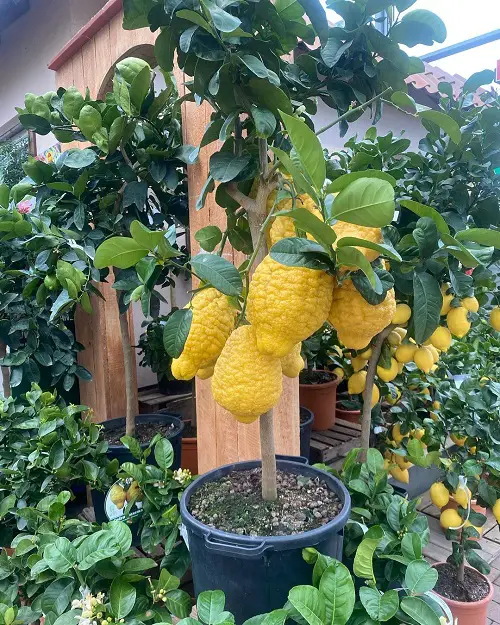
Botanical Name: Citrus medica
USDA Zones: 9-11
Citron is a large citrus fruit. Here’s the thing about citron, though–it’s not exactly what you’d call a snacking fruit. It’s a giant lemon-shaped fruit with a super thick rind and a very tart, almost bitter flesh. Not exactly a thirst quencher! The magic of citron is in its fragrant peel.
27. Clementines
Botanical Name: Citrus × Clementina
USDA Zones: 8-11
Clementines are a cross between a mandarin orange and a sweet orange. The best part? What’s inside is pure deliciousness. Clementines are known for being super sweet and juicy, with way fewer seeds than your average orange.
28. Cloudberry
Botanical Name: Rubus chamaemorus
USDA Zones: 2-4
Cloudberry is a small amber-colored fruit that grows in cold, northern regions. Inuit and Sami people have traditionally collected these sweet, juicy fruits in autumn to freeze for winter food. They are also made into a liqueur.
29. Cluster Fig

Botanical Name: Ficus racemosa
USDA Zones: 10-11
Cluster Figs are fruits of the Moraceae family. These bite-sized fruits are about the size of a grape and have smooth, sometimes fuzzy skin. Don’t let their small size fool you, though–they pack a punch of flavor! They’re known for being sweet and juicy, with a slightly crunchy texture.
30. Coconut Palm
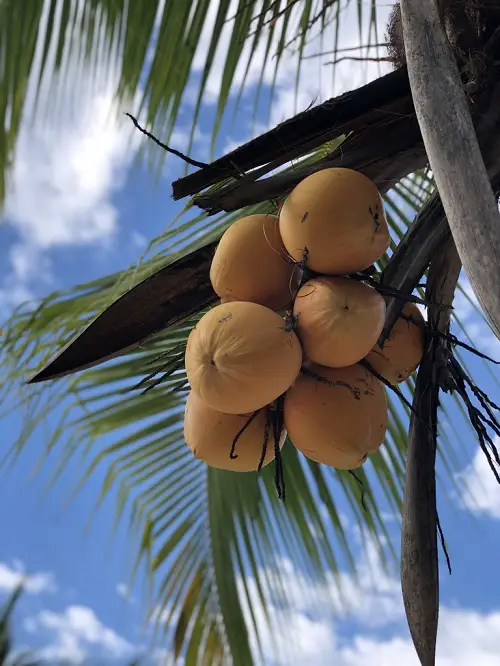
Botanical Name: Cocos nucifera
USDA Zones: 10-12
The fruits of Coconut Palms are oval to round, up to 6-12 inches long, with a thick outer shell. The tough outer husk is great for protecting the treasure inside, but you don’t want to eat that part. Crack it open, and you’ll find a hairy brown shell. Inside is the white flesh part–that’s the yummy bit we call coconut meat.
31. Cocoa

Botanical Name: Theobroma cacao
USDA Zones: 11-12
Who knew chocolate came from a fruit? Forget boring brown pods–these guys come in all sorts of vibrant colors, like sunshine yellow, fiery orange, and even cherry red. But here’s the twist: the delicious part isn’t actually what you think. You’ll find a thick layer of white, fleshy pulp inside.
32. Cocoplum
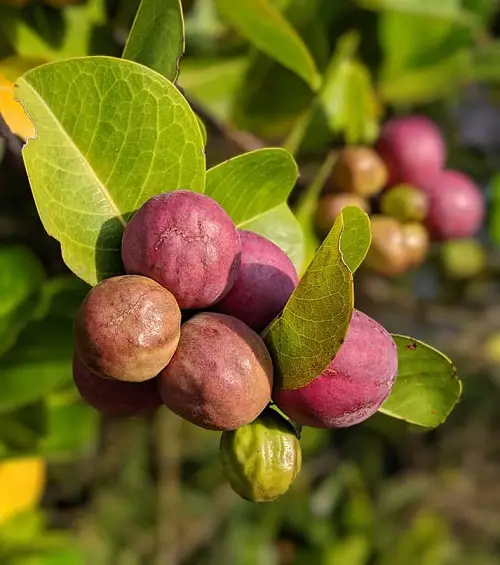
Botanical Name: Chrysobalanus icaco
USDA Zones: 9-11
Cocoplums are common in the Caribbean, South America, and even Florida. The fruit is about the size of a white or yellow plum, with a smooth, thin skin. Both the ripe fruit and the seed inside are edible! The seed has a high oil content and can be roasted for a nutty, slightly bland flavor.
33. Cornelian Cherry
Botanical Name: Cornus mas
USDA Zones: 4-8
Cornelian Cherries are small, bright cherry red olive-shaped fruits that mature in mid-summer. They are a vital food source for birds and squirrels. But you can eat them too. Once ripe, you can pop them right in your mouth for a burst of sweet and tart flavor.
34. Crabapple
Botanical Name: Malus spp.
USDA Zones: 4-8
Crabapples might be mini apples, but their flavor is different. They are known for their tart and sour flavor. Some folks might find them too strong to eat raw, but their tartness makes them perfect for jams, jellies, and even pies.
35. Cranberries
Botanical Name: Vaccinium oxycoccos
USDA Zones: 4-7
Cranberries are closely associated with the holiday season, but you can actually find them available all year round. If you want to grow these berries, the best time is during the spring or fall.
36. Currants
Botanical Name: Ribes
USDA Zones: 3-8
Currants are small berries that grow on shrubs. You can find them in black, red, and white (or sometimes pale yellow). They’re about the size of a pea to a marble, with smooth, translucent skin.



